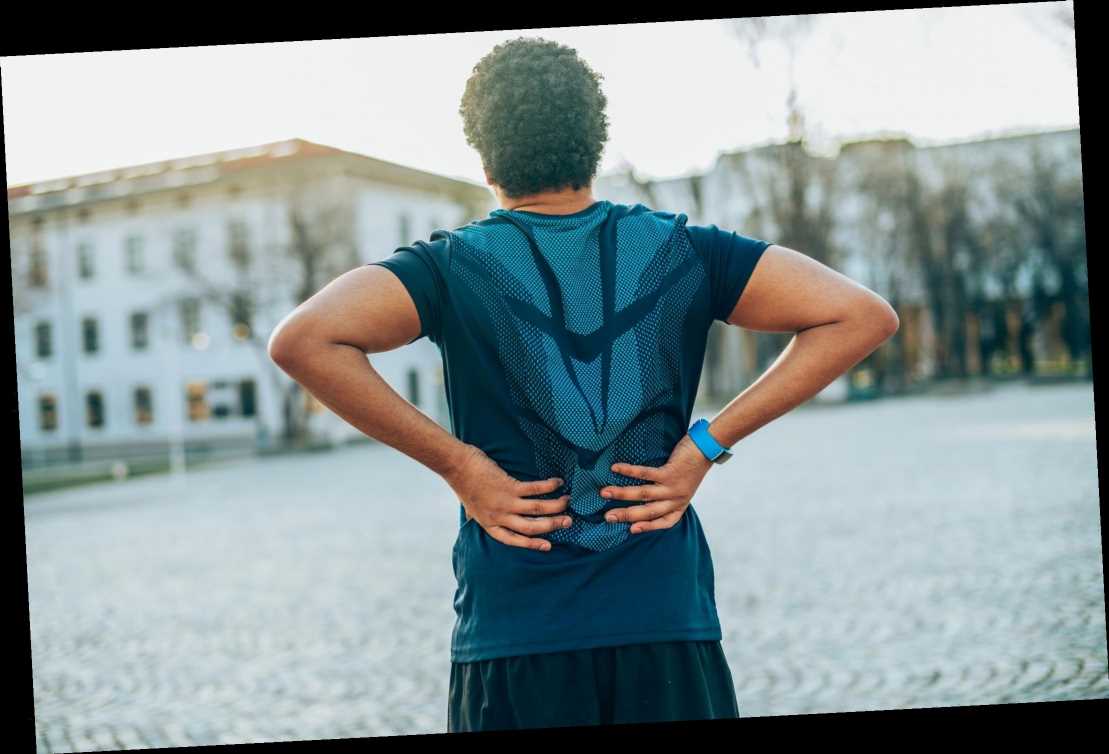So somewhere along the line, your back started hurting while you run. Or maybe a little bit after you run. You get this ache in your lower back, take a little time off, go back to running again, and voila, lower back pain all over again.
So you go to the doctor, who orders some scans. And they turn up exactly nothing. Which does pretty much zero for your frustration level or your back pain.
So why the heck does your back hurt? We checked in with Colleen M. Brough, DPT, assistant professor of rehabilitation and regenerative medicine at Columbia University Irving Medical Center to find out what’s going on.
First off, the answer isn’t only in the scan, she explains. As back doctors will tell you, a funny thing happens with spine images. Some people who have the messiest looking spines in a scan may have no back pain symptoms at all, and others who have perfectly healthy looking spines can have extraordinary pain.
So people in the get-you-back-in-business business have learned to accept that there are many reasons you might have back pain while running. And maybe it can throw you off the trail of a solution if you keep looking for one very specific structural thing. “We find that what the current evidence suggests is to move away from identifying the specific structure that’s driving your pain and look more at what types of movements relieve the pain and what types of movements exacerbate it,” she says.
While these are different for everyone, there do tend to be—broadly speaking—two different categories of runners who experience lower back pain while running, Brough explains. One is people who have a little too much motion and not enough stability while they’re running. And the other is people who have too much stiffness. Here’s a look at each, and what to do to help keep back pain away.
How too much motion creates lower back pain
Some runners’ knees drift in a bit when they land; maybe the ankle rolls in a bit. “The hip tends to drop as well and you get a lot of excess motion that translates up to the spine and you see a lot more movement in the lower back than you should,” says Brough. While you don’t want too stiff of a spine, you see how too much mobility can give you trouble.
What to do if this sounds like you
• Do strength exercises, but not only strength exercises. The first step is to strengthen the muscles in your core and around your hips. That’s a good first step. But it’s not the only step. “If you’re a baseball pitcher and you want to have a stronger, faster throw and all you do is lots of strengthening of the shoulder with weights, that strength isn’t going to turn into a change in your pitching form or speed unless you also train with an emphasis coordination or power,” she says. In other words, you not only need strength, you have to know how to use it, and be able to use it while you’re out on the road. “There’s great research that’s shown that if you just do exercise alone, it doesn’t change your running form one drop,” she says. (Which explains why the last time you just rested or did strength exercises and stopped there, your back started hurting again when you began running again.)
• Train movements, not just muscles. “You also need to train dysfunctional movement patterns,” she says. “It’s not just about the back, it’s not just about the core. It’s about how stable does the core remain and how strong and stable does the hip remain in some sort of synergy. And when the foot hits the ground, do you have enough stability to keep that knee driving forward and the pelvis and low back in good alignment?” So along with strength, “you need to get on your feet and do single-leg activities—ones like single-leg squats and drop jumps,” she says.
• Watch yourself. After all this, you need some “real time cueing.” That means you have to watch yourself and make sure your pelvis isn’t dropping and your knees or ankles aren’t collapsing in. “You start to take your newfound strength and learn how to translate that into changing your running form,” says Brough. “When that happens, we see great success in managing folks who have back pain during running.”
How too much stiffness creates lower back pain
“These are the folks with the terribly tight hamstrings and calves. There’s so much stiffness that they can’t absorb the impact force when the foot hits the ground,” Brough says. And your back takes the hit. Sometimes these runners are so stiff in the spine that when she asks them to lie down on their backs with their knees bent and take a deep belly breath, they have a hard time doing it.
What to do if this sounds like you
“This is a little tricker to manage,” Brough says. But not impossible.
• Start by breathing. One secret to relieving lower back pain in this type of runner is to actually focus a little higher up on the spine and work on loosening up the thoracic spine—that’s the area that spans the 12 bones between your cervical spine (neck) and lumbar spine (that spot where low back pain registers). You want to be like a tree that can respond to a great storm. “The base is very stable and strong, but up top, you see this beautiful, dynamic sway,” she says. Great running is about having more freedom of movement and less strain and impact on the low back. Simple belly breathing is a good place to start. You can also try a spinal twist—that’s where you lie on your side on the floor with knees and hips bent at 90 degrees. Extend both arms in front of you. Lift the top arm by exhaling and slowly rotating your trunk. Reach that arm to the ceiling; behind you a bit if you can. Take three deep breaths while your chest is open. Keep your hips stable and in place. Return to the start and repeat on the other side.
• Add dynamic movements, like quadruped rotations (get on all fours, place your right arm behind your head and rotate the right side of your body so your elbow reaches upward, and repeat to the other side), or standing woodchops (done on both sides).
• Try yoga. “Yoga really does a beautiful job of challenging these runners,” Brough says. “And any kind of golf-related exercises where they can get more rotation into the trunk.” These moves can get you off to a good start.
There’s really an art to running. “Somewhere in between stiffness and mobility is this beautiful balance,” Brough says. And that balance should help you run pain free.
Source: Read Full Article



